It’s Friday!
Adam Forte, a geology professor at LSU, posted this image yesterday on Twitter:
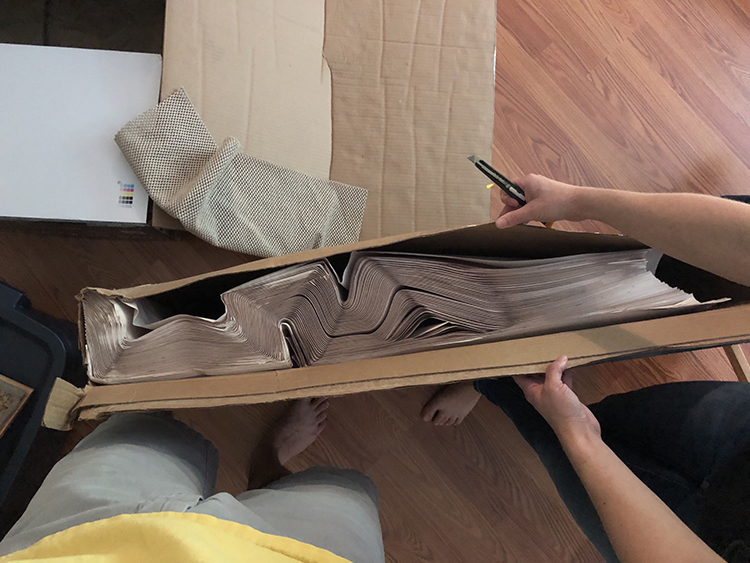
It’s a box of sheets of newsprint, stored vertically and ignored for a while, now rotated 90° so we’re looking at a cross-sectional view. To me, this is an excellent example of a physical analogue modelling experiment (albeit inadvertent) that demonstrates the process by which kink folds form. The key parameters to get this distinctive style of folding is (1) a highly mechanically layered material, (2) a substantial confining pressure, and (3) a dominant stress direction is parallel to the orientation of that layering, or close to it. In the case of Adam’s box of paper, the layering comes from the discontinuities between the sheets, the confining pressure comes from the box, and gravity’s pull was the principal stress direction (σ1). In geological examples that I have celebrated on this blog, the layering is usually sedimentary bedding or metamorphic foliation, and compressive tectonic stress is the cause of the kinking, while being buried deep in the crust provides the requisite confining pressure. Compare what you see above to these examples:
Other kink folds, from previous posts:

Dalradian schists, Walls Boundary Fault, Shetland
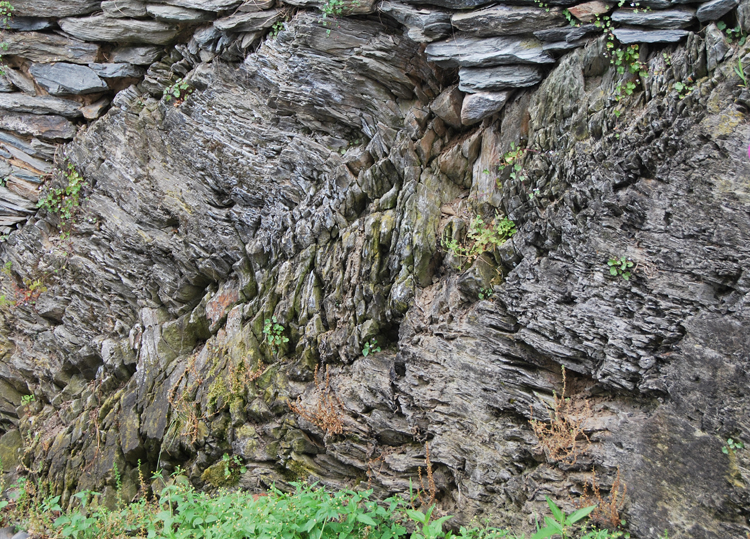
Harpers Formation phyllite, Harpers Ferry, West Virginia
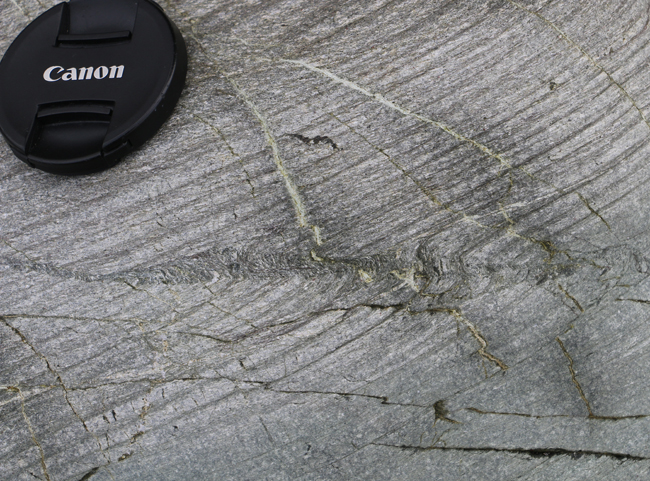
Dalradian schists, Arran, Scotland
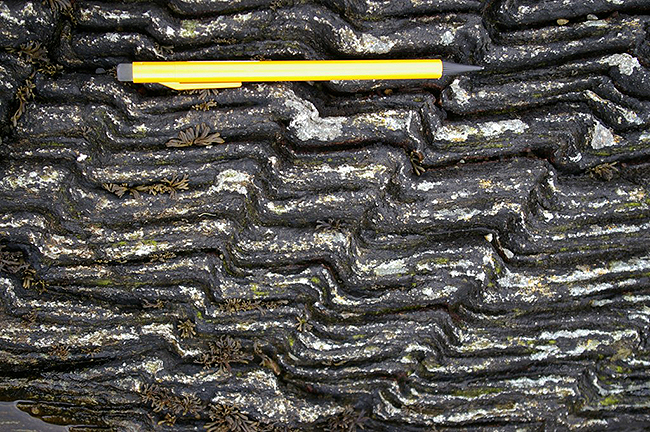
Somewhere else in Arran (not my photo)
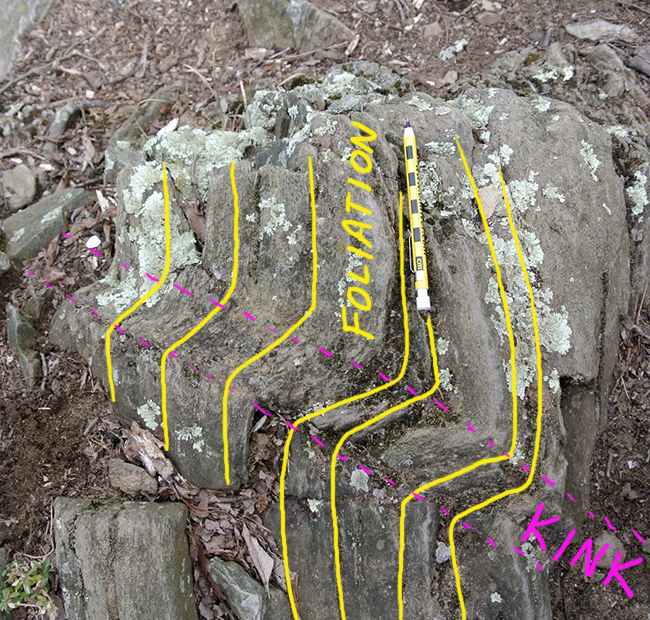
Metagraywacke, Billy Goat Trail, Maryland
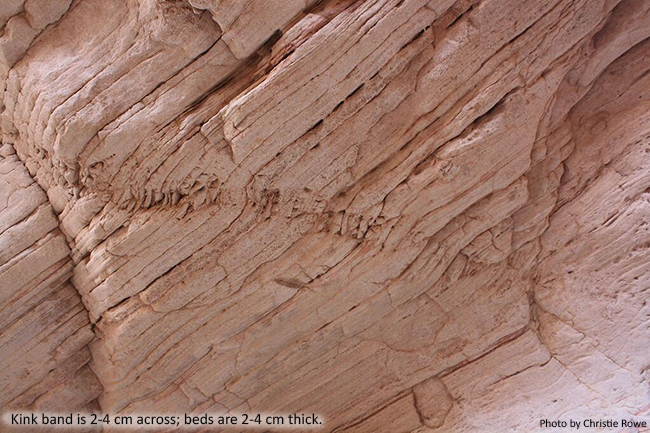
Playa limestones, Basin & Range
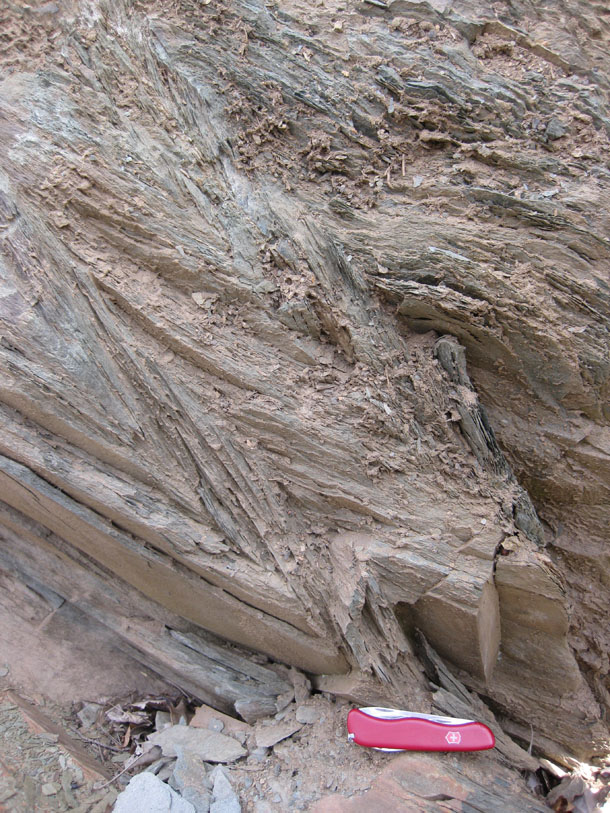
Catoctin Formation greenschist, Thoroughfare Gap, Virginia

Unknown source – kinked phyllite from the GMU teaching collection
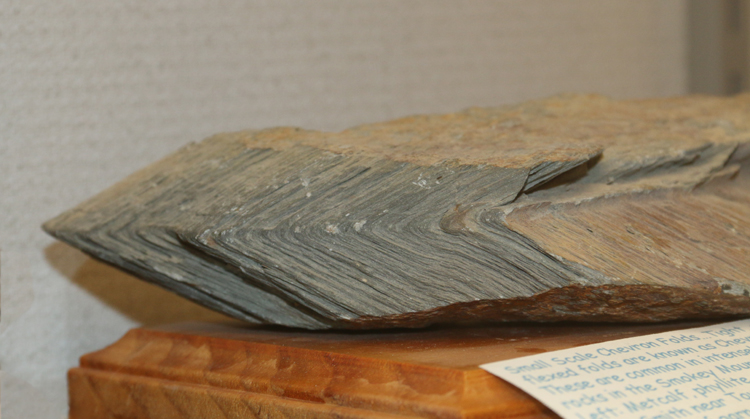
Sample on display at Tennessee Tech
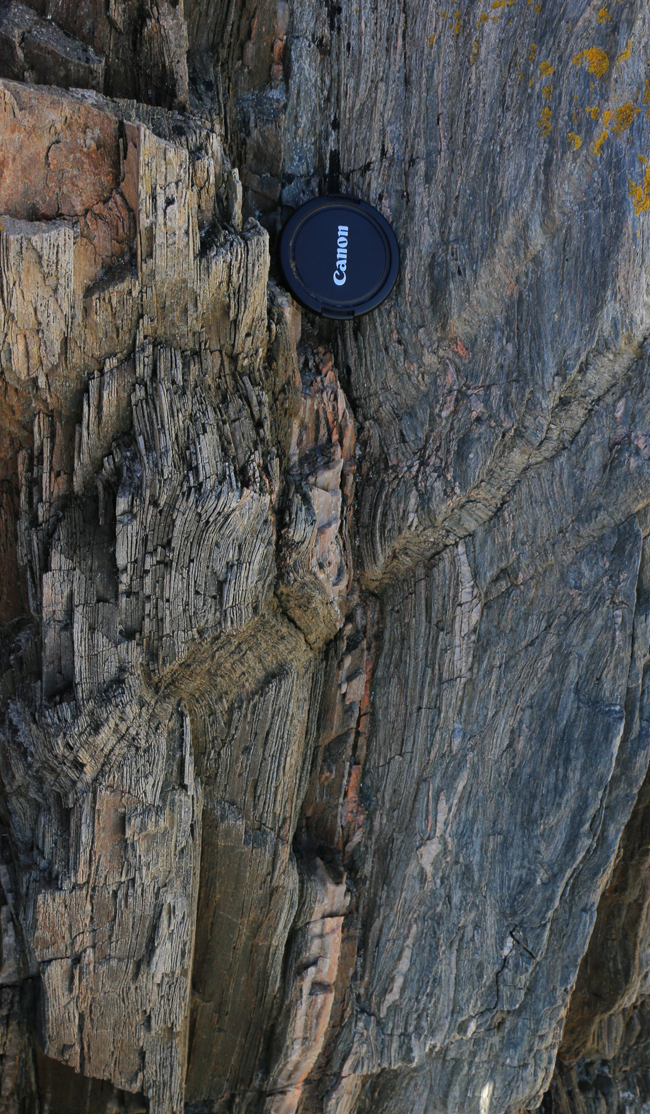
St. Ninian’s Isle, Shetland
And one more from Shetland, again of the Dalradian schists adjacent to the Walls Boundary Fault, since they provide the closest visual match to the paper in Adam’s box, but this time as a stone in a rock wall:

Peace be upon you. Enjoy the weekend. Stretch those kinks out, and get some rest.
